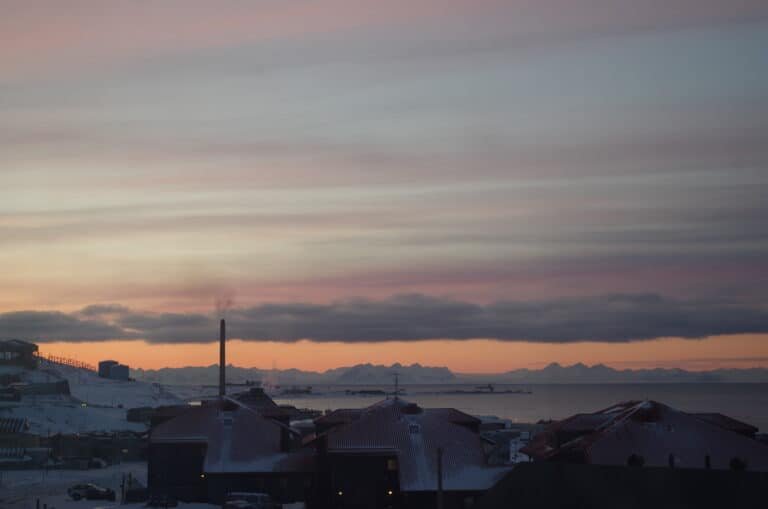Svalbard Travel Guide: Tips & Itinerary for First-Time Visitors
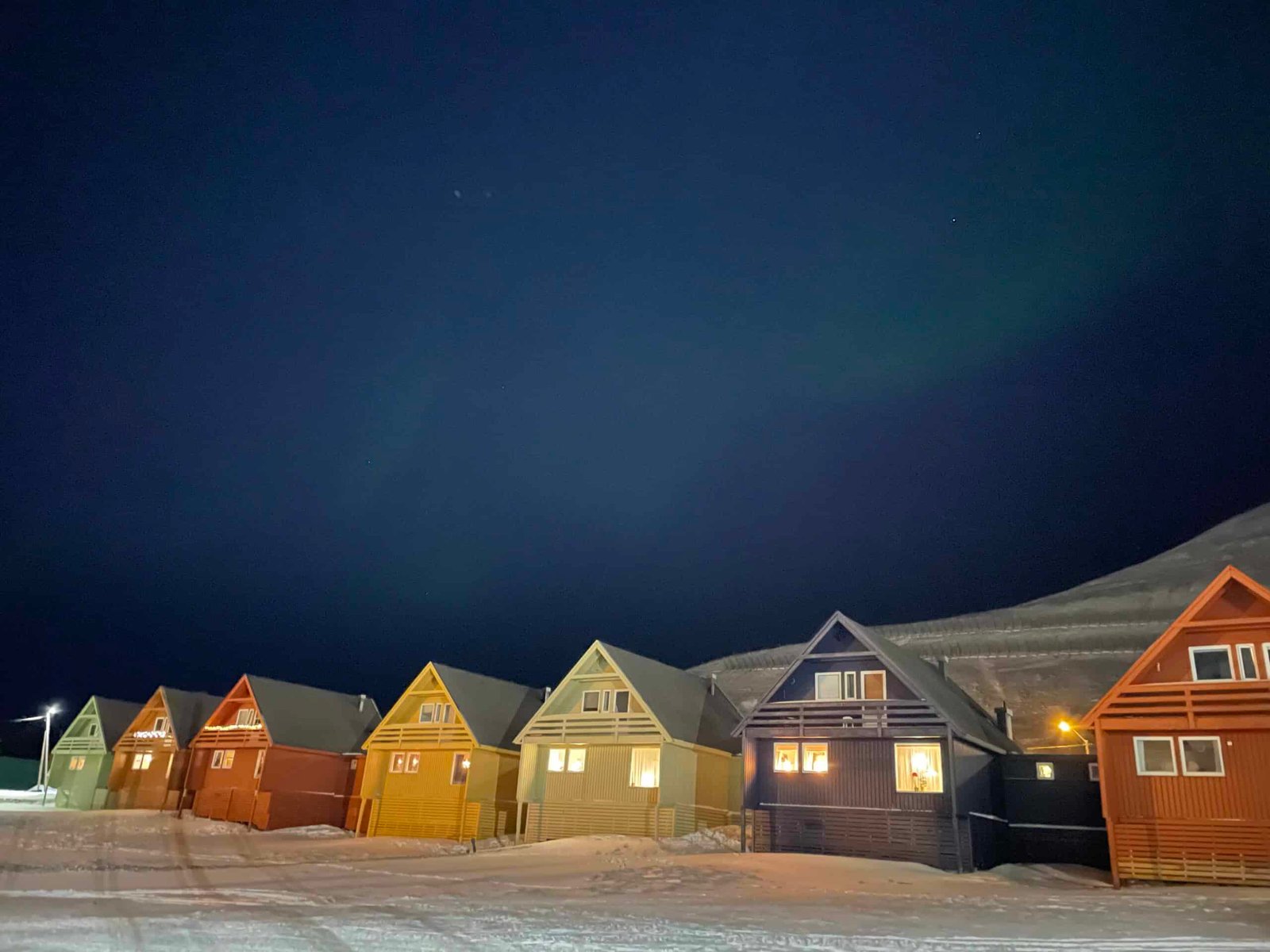
Hi there, welcome to Longyearbyen Svalbard, a place I have called home for the past 4 years. Through living in this Arctic wonderland, I’ve developed a profound understanding of outdoor adventures that I’m eager to share with you. I’ll provide you with the information and practical insights you need as you set off on this adventure to make sure you will have an incredibly immersive experience in Svalbard’s vast outdoors. I wrote a sample 5-day itinerary if you want to jump right off to it.
Key Tips For First-Time Visitors
When planning your first trip to Svalbard, there are several key tips to ensure you have a fulfilling and safe experience.
- Polar Bear Safety: Always travel with a guide or carry a firearm when venturing outside of Longyearbyen, as polar bear encounters are possible. Remember that polar bears are protected and should only be shot in direct life-threatening situations.
- Seasonal Considerations: Choose your visiting season based on what you want to experience. Summer (May-September) offers the midnight sun and relatively warmer weather, making it ideal for wildlife spotting and hiking. The polar night (October-February) is the time to see the Northern Lights, though they’re not guaranteed. Spring (March-April) is a transition period with the sun above the horizon, leading to noticeable changes in the environment.
- Clothing and Gear: Even in summer, Svalbard is cold, so pack warm clothes, including a jacket, hat, gloves, and winter shoes. Winter requires even more layers, and specific gear like a quality parka, thermal tights, legwarmers, sturdy boots, and mittens is essential. A headlamp is also recommended due to possible electricity blackouts.
- Transportation: Taxis are the best way to get around Longyearbyen, and there’s a bus service that operates around flight schedules. To explore other settlements like Barentsburg, you can travel by boat or snowmobile.
- Environmental Care: Svalbard has taken steps to reduce plastic waste, so you will see the efforts at many establishments. Visitors are encouraged to minimize their environmental footprint to help preserve the fragile Arctic ecosystem.
- Cultural and Historical Insights: To learn about Svalbard’s diverse history, from its dinosaur past to its mining era, a visit to the Svalbard Museum is highly recommended.
- Planning and Reservations: Book activities and dining in advance to avoid missing out, as spaces can be limited. This ensures you get to participate in the activities you desire and dine at the restaurants of your choice.
These tips are designed to help first-time visitors navigate the unique aspects of Svalbard and enjoy its many offerings responsibly and safely.
Introduction to Svalbard
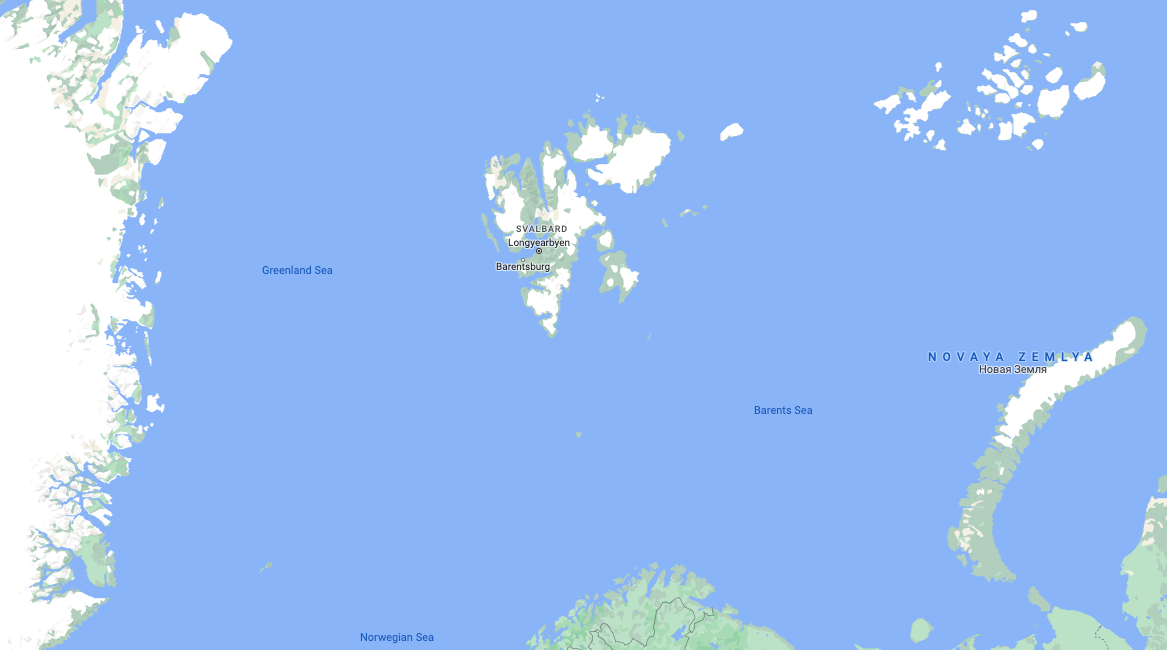
Svalbard is a Norwegian archipelago in the Arctic Ocean. It is in between mainland Norway and the North Pole. We are at 78degrees North. Around 1300km from the North Pole and is the world’s northernmost community with a population of 2596 as of Sep 2023 (both Ny Alesund and Longyearbyen).
Most of the residents are Norwegian but we have a very diverse community. Around 50 different nationalities live here and call this place home.
Svalbard is not just a place on a map; it’s an experience that defies expectations, where adventure isn’t just an option—it’s a way of life.
Why You Should Visit Svalbard
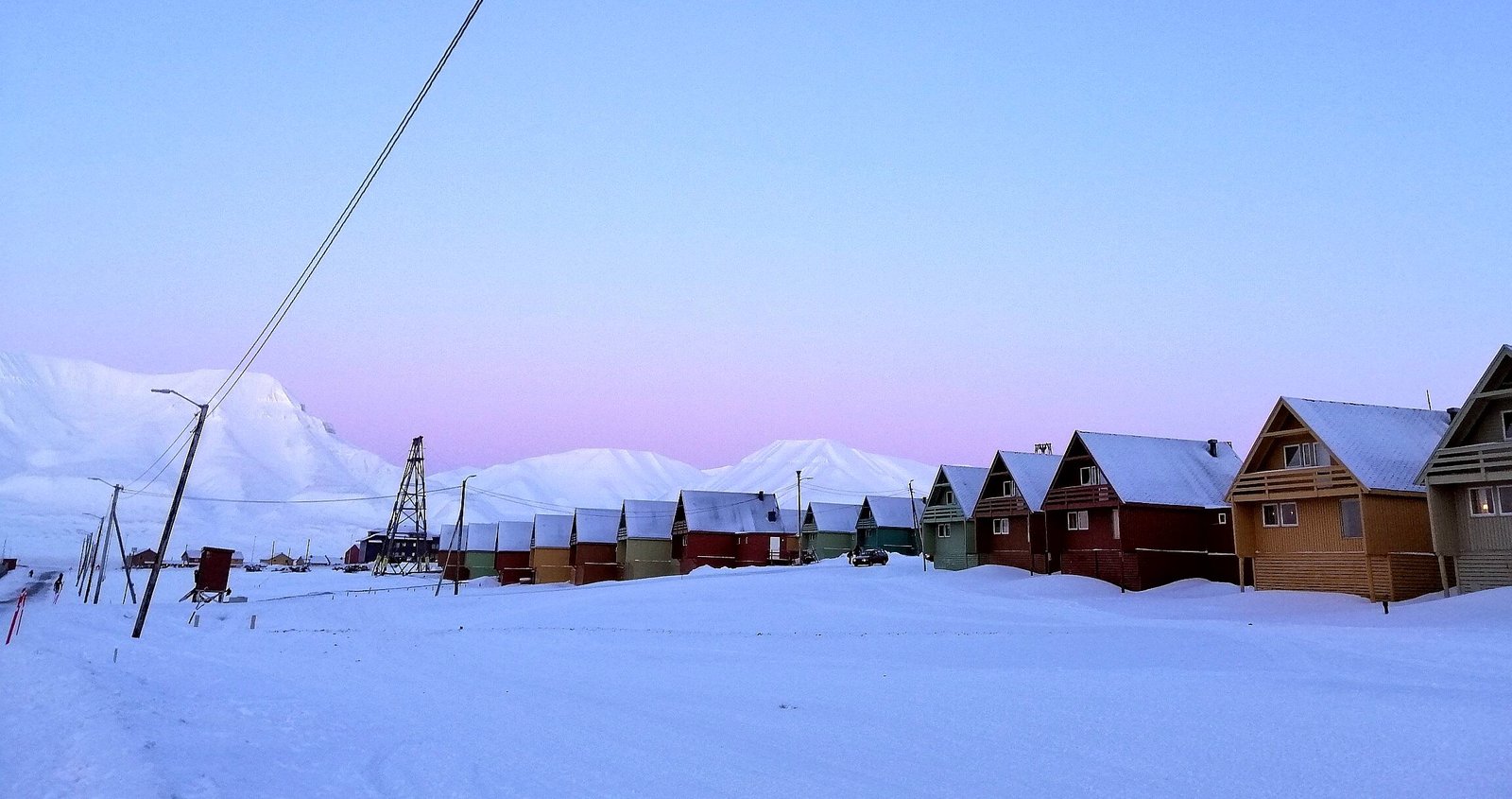
So, if you’re an adventurous soul who loves being outside, experiencing natural beauty, and really connecting with nature without any distractions, then Svalbard might just be the perfect destination for you. There are lots of options in winter or summer and I’ll talk about it more a little bit further down the article.
Svalbard may seem barren, but it has a lot of arctic wildlife like reindeer, walrus, seals, whales, arctic foxes, birds, and polar bears. It is also one of the last pristine wilderness that we have. Svalbard is 1.6x the size of Denmark or an area twice the size of Belgium and less than 2600 people, so just imagine the vastness of the outdoors here. It contains massive areas of raw Arctic wilderness.
And I guess the reason why the locals stay here, at least for me is, the Arctic silence creates an atmosphere that’s totally unique. You’ll experience a peace and quiet that’s almost unmatched anywhere else on Earth. Life feels simple here.
Interesting Facts About Svalbard
- Svalbard is home to the Global Seed Vault, sometimes referred to as the “Doomsday Vault,” which preserves a wide variety of plant seeds in an underground cavern. The Vault acts as a secure seed bank in case global disasters destroy key crops.
- Longyearbyen, the largest settlement in Svalbard, experiences the Midnight Sun from approximately April 20 to August 23 each year, when the sun doesn’t set at all. Conversely, during the Polar Night, from around October 26 to February 15, the sun doesn’t rise above the horizon.
- Despite its remote location, Svalbard has a remarkably international community. With a population of over 50 nations, it’s one of the most globally diverse places relative to its size.
- You can’t give birth here simply because the hospital is not equipped for that. So expecting mothers have to go to Tromso 2 weeks before their due date.
- Cats are banned from the island. Svalbard has a lot of areas where seabirds nest and even just a few cats could cause potential harm to the colonies. Cats can also spread diseases since they carry different parasites in their guts and intestines.
Preparing for Your Trip
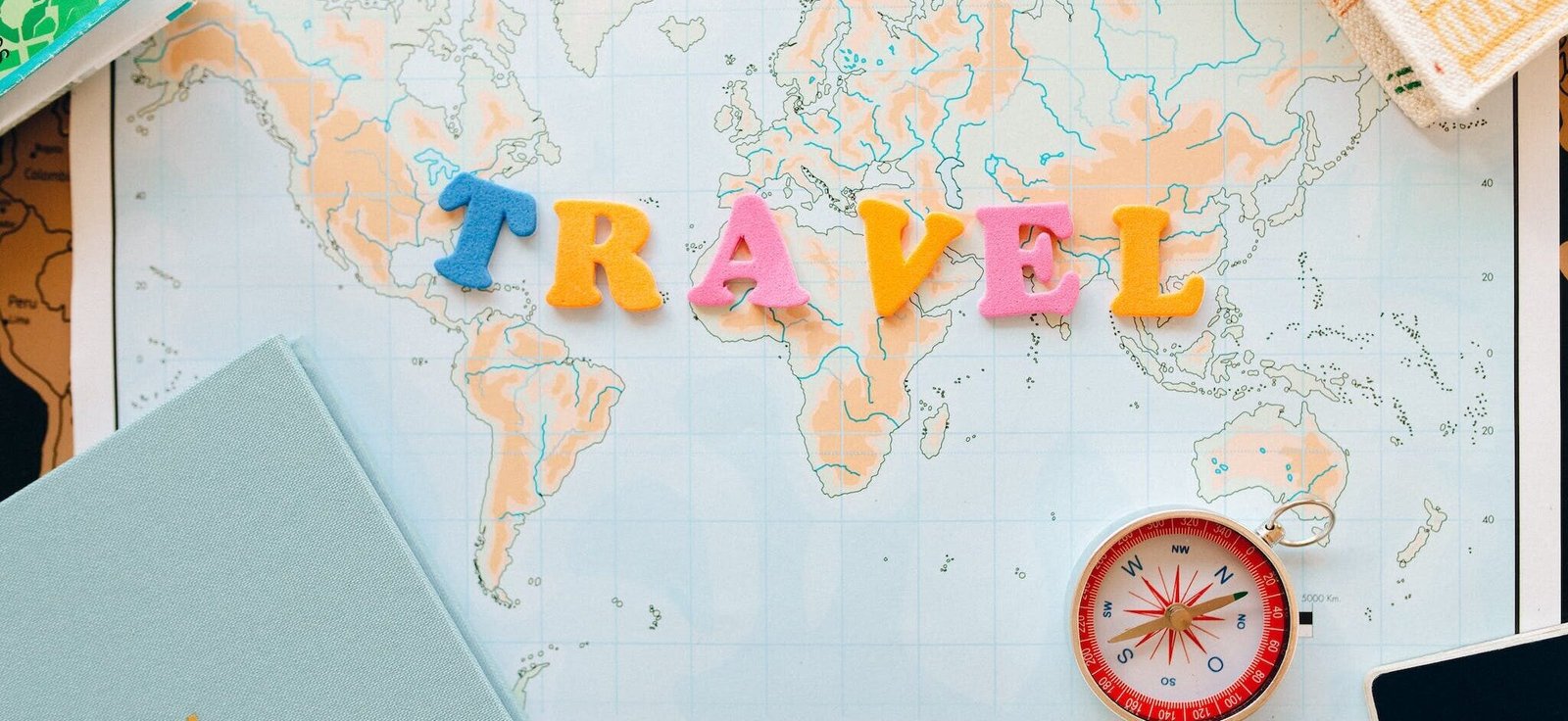
Visa and Entry Requirements
Before you pack your bags, let’s talk logistics. Svalbard is unique—there’s no visa requirement for entering, but there are some nuances. If you’re passing through mainland Norway, you’ll need to adhere to Norway’s visa regulations. It’s always a good idea to check the latest travel advisories before your trip.
How to Get to Svalbard
Reaching the edge of the world is simpler than you might think. Regular flights from Oslo and Tromsø bring you straight to Longyearbyen. But remember, the weather can be unpredictable, so plan for potential delays.
Best Time to Visit Svalbard
Timing is everything. Do you want to experience the 24-hour daylight (midnight sun) or the mystical northern lights? The Midnight Sun reigns from late April to late August, while the Polar Night (24-hour dark) lasts from late October to mid-February.
For wildlife and warmer temps, aim for the summer months. If the aurora borealis is on your bucket list, winter is your best bet. If you want to experience dog sledding, skiing, or go on a trip with a snowmobile, then spring season is the best time. Keep in mind, that each season offers a unique Svalbard experience, so choose what calls to you the most.
Costs and Budgeting for Your Trip
Svalbard isn’t a budget destination—expect high costs for accommodation, food, and activities. Plan your budget well in advance, considering tours, dining out, and any unique experiences like dog sledding or snowmobiling, which can add up quickly.
What to Pack: Clothing and Essentials for Svalbard Weather
Layers are your best friends in the Arctic. Pack thermal underwear, insulated outerwear, waterproof boots, and accessories like beanies and gloves. Don’t forget UV-protective sunglasses and sunscreen for the summer’s constant daylight.
Health and Wellness
Stay hydrated and well-nourished; the cold can deceptively dampen your thirst and hunger cues. Prepare for the physicality of Arctic adventures with pre-trip fitness, and always have emergency contacts at hand.
Environmental Responsibility
Svalbard’s beauty comes with fragility. Stick to designated paths, minimize waste, respect wildlife from a distance, and follow all guidelines for environmental conservation. Remember, leave no trace and take only memories.
Navigating Svalbard
Navigating Svalbard is an adventure in itself. Getting from one place to another is as much a part of the experience as the destinations themselves.
Getting Around: Transportation Within Svalbard
Longyearbyen is walkable, but for longer distances like to the airport or visiting the mines, taxis and buses are available. For exploring the wilderness and remote areas, snowmobiles reign supreme in winter, while boats are the go-to in summer. But always remember: when venturing beyond town limits, Svalbard’s safety rules kick in, so prepare accordingly and consider hiring local guides for the true Arctic exploration experience.
If you booked a guided tour, pick up and drop off is part of the package most of the time so you don’t have to worry about that.
Towns and Settlements
There are a total of 5 settlements here in Svalbard-Longyearbyen, Barentsburg, Pyramiden, Ny-Ålesund, and Hornsund in Southwestern Spitsbergen which houses a small Polish research station.
Longyearbyen

Longyearbyen is the largest settlement in Svalbard. It’s known for being the world’s northernmost town of its size, offering a surprisingly rich array of cultural and modern amenities. Despite its remote location, it has a university center, quality dining, and even its own brewery and chocolate.
Historically, Longyearbyen was established as a coal mining town by the American businessman John Longyear in 1906, which is how it got its name. Mining was the backbone of the town for a long time, but now it’s transitioning towards research, tourism, and education. The town has adapted to the Arctic life with unique quirks like removing shoes indoors to avoid dragging in coal dust, a tradition from its mining days. Despite the harsh climate and potential encounters with polar bears, our community is known for its resilience and hospitality.
Barentsburg
The second-largest settlement on Svalbard. It’s still a working mining town, though tourism is growing in importance. Unlike Longyearbyen, Barentsburg has a more Soviet feel, with its stark architecture and monuments from the Soviet era. It’s a place that feels like a step back in time, with its own cultural quirks, such as the Russian signposts and the Pomor Museum, which tells the story of Russian hunters from the past. Despite its remote location, Barentsburg has its own hotel, a few shops, and even a brewery that caters to both residents and visitors.
Pyramiden
Pyramiden is an abandoned Soviet-era mining town on Svalbard, named after the pyramid-shaped mountain nearby. It was established by Sweden in the 1910s and sold to the Soviet Union in 1927. Pyramiden was once home to a thriving community, but it was abruptly abandoned in 1998, leaving behind buildings that are like time capsules of the Soviet era. Today, it’s a ghost town that attracts tourists for its eerie, well-preserved buildings, including the world’s northernmost statue of Lenin and a once bustling cultural center with a gym, library, and music hall. Visiting Pyramiden is like walking through recent history, seeing a slice of life preserved in the Arctic cold.
Ny Ålesund

It’s renowned primarily for its research facilities; various countries have stations here to study arctic sciences, from biology to glaciology. This place has a rich history in polar exploration and was a starting point for several North Pole expeditions. Today, it’s a small international community of scientists and support staff, with usually fewer than 200 people living there at any given time. There are no permanent residents; people come here mainly for research purposes. Despite its focus on science, Ny-Ålesund retains elements of its past, including historical buildings and a post office that’s a favorite for sending postcards with a unique Arctic postmark.
Hornsund

The Polish research station in Hornsund, Svalbard, has a small but significant presence, with a total population of 12 people as of 2023. Established in 1957 by the Polish Academy of Sciences during the International Geophysical Year, the station was built on the flat marine terrace of Isbjørnhamna. Initially set up for summer research, it was modernized in 1978 to support year-round scientific activities.
Today, the station’s research encompasses a wide array of Arctic sciences. Full-year research includes meteorology, seismology, geomagnetism, ionospheric sounding, glaciology, atmospheric electricity, and environmental monitoring. These studies are crucial in understanding climate change, seismic activities, the structure of the ionosphere, and the dynamics of glaciers. Additionally, the station serves as a base for seasonal research in fields such as geology, geodesics, geomorphology, oceanology, and biology.
Wikipedia
This outpost is a testament to the global scientific community’s commitment to studying and understanding the Arctic’s environment and its broader implications for the world.
Where to Stay in Svalbard?

Finding a cozy place to stay is an essential part of any travel experience, especially in the remote Arctic. In Svalbard, you’ll be pleasantly surprised by the range of accommodation options that provide comfort and warmth in contrast to the chilly wilderness outside.
We do have quite a few choices. Prices vary depending on the season so make sure to check out their website to get a more accurate quote. The prices I have indicated here were from this year’s summer season.
Radisson Blu Polar Hotel (2709 NOK): Centrally located with big rooms and a fjord view. Perfect for unwinding after outdoor activities with its in-house pub and restaurant. It can get busy with tour groups.
Svalbard Hotel (2709 NOK): Offers beautifully decorated rooms, complimentary breakfast, and a gourmet in-house restaurant, Polfareren.
Basecamp Hotel (3300 NOK): A cozy, rustic hotel that mimics a High Arctic trapper’s hut. It includes a great breakfast and offers various excursions. Located centrally.
Mary-Ann’s Polarigg (1425 NOK/single room): Converts old miners’ barracks into charming hotel rooms with a homey feel.
Funken Lodge (3847 NOK/night): A short walk from downtown, this upscale hotel offers large, modern rooms and a French restaurant, blending luxury with adventure.
Coal Miner’s Cabins (1300 NOK): Budget-friendly with a mix of shared and private bathrooms. It’s a 20-minute walk from the town center.
Gjestehuset 102 (1400 NOK): A budget hostel close to Coal Miner’s Cabins with shared bathrooms. Situated in Longyear Valley, ideal for exploring the town from top to bottom.
Haugen Pensjonat (1600 NOK/night): Just a 10-minute walk to the town center. Bright rooms with king-size beds and sofas, offering views of mountains or Longyearbyen and Adventfjorden.
Where to Eat and Drink

As nothing grows in this region, we don’t have a distinct local cuisine. Instead, our cuisine is a blend of different flavors and a variety of experiences, influenced by some elements from the Arctic.
Mary Ann’s Vinterhagen
Serves up local specialties, offering dishes made with reindeer, seal, and whale meat, Svalbard cod, etc. The hearty flavors of these meats and fish are a reflection of the traditional Arctic diet and are worth trying for an authentic Svalbard experience.
Kroa
Is known for its relaxed atmosphere and historic touch. Here you can start with smoked minke whale before moving on to a hearty moose burger, blending traditional tastes with a touch of the familiar.
Stationen
Offers a mix of traditional Norwegian food and international dishes. Here you can enjoy everything from succulent spare ribs to whale steak and fresh cod, providing a broad taste of Norway’s culinary offerings.
Restaurant Polfareren
Svalbard Hotel is where you can enjoy a gourmet meal without breaking the bank. The menu features Svalbard reindeer, whale, cod, and salmon, catering to those who seek a fine dining experience with a touch of the Arctic.
Restaurant Nansen
Provides a high-end dining experience with a menu inspired by the Nordic regions, including local Svalbard cod and reindeer.
Gruvelageret
Offers fine dining in a historic setting that reflects 100 years of coal mining history in Svalbard. The focus here is on genuine and honest food with elements from the Arctic, including reindeer dishes that start the meal off on an authentic note.
Huset Restaurant
Considered one of Norway’s premier dining experiences, focusing on Nordic techniques and local produce. It’s also known for one of Northern Europe’s most extensive wine cellars, boasting over 15,000 bottles. They serve ingredients primarily from the Arctic region, including bearded seal and ptarmigan, providing a true taste of Svalbard.
For those looking for more familiar options, Barentz Pub and Svalbar offer comfort foods like burgers and pizzas, perfect for those craving a taste of home amidst the Arctic surroundings. We also have cafes like Fruene and Cafe Huskies if you just want a light meal or a cozy spot for coffee.
In all these dining experiences, the emphasis on locally sourced ingredients is clear, and the Arctic influence is ever-present, ensuring that every meal contributes to a truly Svalbard experience.
Shopping and Supermarkets

Shopping in Longyearbyen offers a unique experience where you can find everything from practical outdoor gear to distinctive local handicrafts. Given its remote location, the variety of goods available is quite impressive.
Supermarket: We only have one supermarket up here-Svalbardbutikken, which resembles a typical European grocery store but with a broader selection of frozen goods to cater to the longer shelf life needed for remote living. Here, you can find a wide range of food items, from fresh fruits and vegetables to dairy, meats, and dry goods. The prices can be higher than on the mainland due to transportation costs. However, since we are in the Arctic, it’s not always a given that certain products will always be available.
Souvenirs and Specialties: For souvenirs, there are several stores where you can buy unique Svalbard-themed items such as postcards, stamps, books, and local art. These shops also sell outdoor clothing and equipment, catering to both the rugged needs of adventurers and the desire for comfort against the Arctic chill.
Local Handicrafts: The local crafts include items made from Svalbard reindeer and seals. It’s important to note that while these items are locally sourced and crafted, there may be restrictions on bringing them into certain countries, so always check customs regulations.
Alcohol and Tobacco: These items are sold at Nordpolet, located within Svalbardbutikken. Due to Svalbard’s duty-free status, prices for alcohol and tobacco are considerably lower than in mainland Norway, but there are strict regulations on how much you can purchase without a permit.
Activities in Svalbard
I’m just making a list of the things you can do in Svalbard. I’ll be writing a different piece with more in-depth information about it.

Spring Season (March- Mid May; Sunny Winter)
This is my favorite time of year. This time of day has the most beautiful sky. After living in the dark for three months, seeing the light again is like being reborn. And after that long darkness, locals are now eager to go outside and explore.
Dog Sledding: Whether it’s the dark season or the midnight sun, dog sledding is an authentic way to experience the Arctic. Mushing across the tundra offers a quiet and respectful way to witness the untouched landscapes.
Snowmobile Tours: Speed across the frozen landscapes and reach remote areas not accessible by foot. It’s a thrilling way to explore the vast wilderness and hunt for the Northern Lights during the polar night.
Glacier Hiking: Strap on some crampons and explore the blue ice of Svalbard’s glaciers. It’s a breathtaking experience that showcases the island’s dramatic frozen scenery.
Ice Cave Visits: Glaciers in Svalbard are a network of ice caves carved by meltwater, and the good news is that some are open for exploration. With the right gear like a headlamp, crampons, and a helmet, you can immerse yourself in the serenity of these ice formations, surrounded by stunning shades of blue, delicate icicles, and intricate snow crystals.
To reach the ice cave, you’ve got choices. You can go dog sledding and just let a husky team lead you there. Snowmobiles and snowcats offer a faster ride to the cave’s entrance or if you prefer not to join a group, you can also go skiing or snowshoeing. Pick your adventure based on the experience you’re after but always remember to have a local guide with you!
Nordic Skiing: If you visit during the colder months, cross-country skiing is a fantastic way to travel the snowy landscape and enjoy the pristine Arctic environment.
Summer Season (Mid May – September; Midnight Sun)
The 24/7 daylight. Others find that this is an excellent time for travel because they feel like they have lots of free time and vitality. However, for some people, falling asleep presents a challenge, so make sure to bring a sleeping mask with you when you visit up here during this season.
Hiking: Longyearbyen offers a range of guided hikes for all levels, each promising breathtaking views and expert guidance. You can do a guided hike with photography, or fossil hunting to find ancient plant fossils. Guides will share insights into the local history and geology as you enjoy a break.
Amazing hikes include the panoramic Plateau Mountain, Blomsterdalshøgda with views of the Global Seed Vault, or the glacier-crossing trek to Trollsteinen.
Boat Trips: During the summer, boat trips offer a unique perspective of the fjords, glaciers, and wildlife. Keep an eye out for whales, seals, and seabirds as you navigate the Arctic waters. There are choices of half-day trips, full-day trips, and multi-day excursions with expedition cruises around Svalbard.
Kayaking: Paddle in the silence of the Arctic, with the water as your path through fjords and beside glaciers. It’s a peaceful activity that connects you with the profound tranquility of the North.
Taxi Tours: The best way to get an overview of Longyearbyen. The driver can tell you about the history of Longyearbyen and some major local attractions.
Biking Tours: You can join biking tours in Svalbard that offer a glimpse of the Arctic’s natural beauty, complete with fjords, mountains, and potential wildlife sightings. You’ll pass by remnants of Svalbard’s mining past. With a guided tour you can benefit from expert knowledge and safety guidance, allowing you to make the most of the experience.
ATV Safari: You will drive a Can-Am Outlander ATV from Longyearbyen town out to the Advent Valley. If you’re lucky you might see some reindeer and arctic foxes among the rich bird life.
Fishing Trips: Svalbard’s fishing trips let you enjoy the dual pleasures of observing wildlife while fishing. You can catch cod and learn about the area’s fishing practices. Not always but you may also get a chance to see walruses and whales, during your fishing adventure.
Winter Season (October – February; Polar Night)
And of course, the polar night or dark season as most of us call it. For 3 months the sun doesn’t go above the horizon. Total pitch black outside. It is my least favorite season so I normally take my vacation during this time of the year. But it comes with an advantage. Because that means you can see Northern Lights no matter what time of the day it is.
Northern Lights Expeditions: Northern Lights tours in Svalbard during winter are a prime attraction, offering a chance to witness the aurora borealis in one of the few places on Earth where it’s visible. Options range from snowmobile and dog sled excursions to stationary observatories, for both active and relaxed observation. The tours are guided by experts who can not only help locate the best views but also explain the science and folklore behind the northern lights.
Snowmobile trips (shorter ones): Snowmobile trips in Svalbard during winter are a thrilling way to explore the Arctic landscape, including destinations like the Iron Beds, Brattadalen, and Colesdalen. The iron beds give a glimpse into Svalbard’s mining history, Brattadalen offers wide valleys with a chance of spotting wildlife, and Colesdalen features stunning ice formations. All tours are led by experienced guides who prioritize safety and provide all necessary equipment.
Dog Sledding: This guided excursion provides all necessary equipment and typically includes warm clothing to ensure comfort against the Arctic chill. Dogsledding during this time not only offers an authentic Arctic experience but also a chance to connect with the quiet and majestic nature of Svalbard’s wilderness.
All Year Round
Visit the Global Seed Vault: While you can’t go inside the vault itself, you can see the entrance to this crucial global initiative, which preserves a wide variety of plant seeds from around the world.
Cultural Experiences: Visit the Svalbard Museum to learn about the history and nature of the archipelago, or catch a performance at the world’s northernmost cultural center. Or drop by the North Pole Expedition Museum which houses an extensive collection of artifacts, photographs, and stories documenting the heroic efforts of North Pole expeditions throughout history. It’s an inspiring visit that offers a deeper understanding of polar exploration and the immense challenges faced by adventurers in the Arctic.
Photography Tours: With its unique landscapes and lighting, Svalbard is a photographer’s dream. Guided tours can help you capture the perfect shot, whether it’s wildlife, auroras, or midnight sun vistas.
Local Brewery Tour: The tour explains the history of alcohol law in Svalbard, and the process of making beer in such an extreme Arctic environment, and includes a tasting session of the various beers produced on-site. This tour requires booking in advance and provides an opportunity to purchase brewery merchandise and bottled beers to take home.
Practical Information

Flights to Longyearbyen
Norwegian Air and SAS are the two airlines that fly up here a couple of times a week. Sometimes the flight frequency increases up to twice per day during high season, from March to August, so plan accordingly.
WiFi and Cellular Data
Most hotels, restaurants, and public spaces in Longyearbyen offer free WiFi to customers. Svalbard is special in so many ways. Some rules from mainland Norway apply and some don’t. But luckily the EU mobile phone roaming regulation also applies up here. So travelers from the EU don’t need to worry about roaming charges. But for others, roaming charges can be high so always check with your service provider.
Currency and Payments
The Norwegian Krone (NOK) is the currency used in Svalbard. Card payment is the primary method of payment since we do not have a bank here anymore. Not all establishments accept cash payment.
Shopping Hours
Shops in Longyearbyen have limited hours, especially outside of the tourist season, so plan accordingly. The supermarket has broader hours, but don’t expect the 24/7 services found in larger cities.
Safety Precautions in Svalbard
Safety here goes beyond packing a first-aid kit. Due to polar bear risks outside settlements, always have a means of protection and an experienced guide. Avalanches and glaciers also pose dangers, so heed local advice and stick to marked trails.
Average Daily Costs in Svalbard:
Living and traveling in Svalbard can be expensive. On average, a budget traveler might spend around 1500-2000 NOK per day, staying in hostels and self-catering. Mid-range travelers can expect to spend about 2000-3000 NOK per day for a hotel room, meals at restaurants, and some activities. For a more comfortable experience with tours and dining, expect to spend upwards of 3000 NOK per day.
This, of course, is just an estimation. The total cost will depend on how and when you want to spend your time up here. I have included a list of tour companies below so you can plan ahead of time.
- Henningsen Transport and Guiding– for boat tours along the fjord during the spring and summer seasons.
- Hurtigruten Svalbard– all-year-round tour provider
- Svalbard Adventures– all-year-round tour provider
- Basecamp Explorer– offers day trips, overnight trips, and expeditions
- Svalbard Wildlife and Expeditions– most of the tours they offer are during summer and on small groups
- Better Moments– offers snowmobile trips in the winter and boat, kayak, and hiking trips in the summer
- Backyard Svalbard– specializes in ski touring with certified guides
- Svalbard Husky– specializes in short and long expedition trips through dog sledding
- Green Dog Svalbard– short and multi-day dog sled expedition
How much time do you need in Svalbard?

Depends on your interests, budget, and the activities you plan to do. In my opinion, If you plan on doing 3 activities, you need 5 days because most of the activities start early morning. You can squeeze in the sightseeing tour or short hikes on the day you arrive or before you leave.
A short stay of about 3-4 days can be sufficient for exploring Longyearbyen, participating in a few activities like dog sledding or a snowmobile tour, and perhaps a quick day trip around the area.
If you’re interested in more extensive experiences, such as boat trips to remote areas, overnight snowmobile trips, longer dogsled excursions, or hikes during the summer, a week to ten days could be more appropriate.
For those looking to immerse themselves in the Arctic environment, engage in specific wildlife watching, or undertake scientific or photographic work, you might want to plan for even longer, up to a couple of weeks or more. Always keep in mind the seasonal variations, as they can greatly affect the types of activities available and the experience during your visit.
Sample 5 days Itinerary in Svalbard
Day 1: Arrival and Longyearbyen Exploration
- Arrive in Longyearbyen and check into your accommodation.
- Spend the afternoon exploring the town, visiting the Svalbard Museum to learn about the region’s history and natural environment.
- Enjoy dinner at a local restaurant and get your first taste of Arctic cuisine.
Day 2: Dog Sledding Adventure
- Embark on a half-day dog sledding trip to experience the Arctic wilderness. Learn to mush your own team of huskies.
- In the afternoon, visit the Svalbard Art Gallery and the North Pole Expedition Museum.
- Relax in the evening with a craft beer at Svalbard Brewery.
Day 3: Snowmobile Tour to the Wilderness
- Gear up for a snowmobile tour, which is a quintessential Svalbard activity. After a safety briefing, you’ll ride through the stunning Arctic landscape, exploring frozen fjords and valleys.
- Stop for a warm lunch at a remote cabin and enjoy the silence of the wilderness.
- Return to Longyearbyen in the afternoon. Rest or explore more of the town at your own pace.
- For dinner, relax at a local eatery with comfort food to wind down after an exhilarating day.
Day 4: Fjord Cruise, Wildlife Watching, and Ice Caving
- Begin your day with a boat tour to explore the majestic fjords. Keep your eyes peeled for wildlife such as seals and seabirds, with the melting ice providing opportunities for unique sightings.
- After returning from the cruise, refuel with a quick lunch in town.
- In the afternoon, join a guided tour of an ice cave. Discover the intricate beauty of ice formations and learn about the glaciers that shape Svalbard’s landscape.
- Spend the evening reflecting on your day’s adventures over a leisurely dinner featuring local ingredients.
Day 5: Leisure Day and Departure
- Spend your last morning in Svalbard at leisure. Consider a casual walk around town or a visit to the local greenhouse.
- Check out of your accommodation and catch your flight home, or continue on to your next destination.
Remember to book all activities in advance and stay flexible, as weather conditions can change plans in Svalbard. Always follow your guide’s advice for safety considerations, especially regarding wildlife and terrain.
I will be writing more about Svalbard and will update this page from time to time. You could also go to visitsvalbard.com for any information you did not find here. That’s all for now and hope to see you around!




